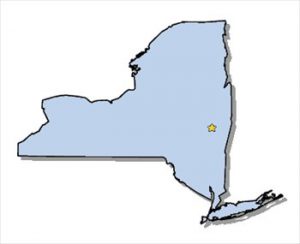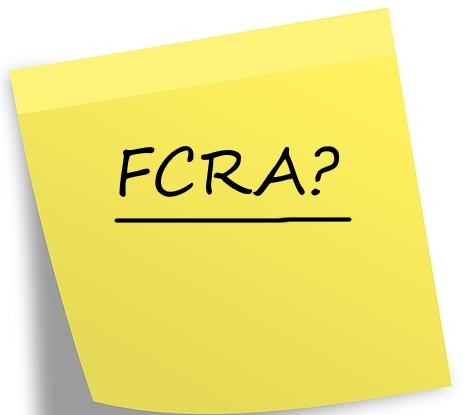
Our Informed Screener Blog.
5 more states approve the recreational use of marijuana.
Five more states approve the recreational use of marijuana.

As part of the 2020 election five more states, New Jersey, Vermont, Arizona, Montana and South Dakota approved the recreational use of Marijuana.
These states now join a growing list of states where Marijuana is legal for recreational use:
-
Colorado
-
Massachusetts
-
Alaska
-
District of Columbia
-
Oregon
-
Washington
-
California
-
Maine
-
Nevada
-
Michigan
-
Illinois
In light of the changing legal landscape regarding allowances in drug usage, we have begun to see the advent of 4- panel and 9- panel screens which do not test for cannabinoids (marijuana) as the earlier, traditional 5- panel and 10- panel screens have. See the table below for the typical 5, 4, 10 and 9 panel tests:
| Screen/Test |
Drugs Tested |
| 5 Panel | Amphetamines; Cocaine; Cannabinoids; Opiates; Phencyclidine |
| 4 Panel | Amphetamines; Cocaine; Opiates; Phencyclidine |
| 10 Panel | Amphetamines; Barbiturates; Benzodiazepines; Cocaine; Cannabinoids; Methadone; Methaqualone; Opiates; Phencyclidine; Propoxyphene |
| 9 Panel | Amphetamines; Barbiturates; Benzodiazepines; Cocaine; Methadone; Methaqualone; Opiates; Phencyclidine; Propoxyphene |
Illinois legalizes Marijuana for Recreational Use
-Illinois becomes the 11th state to legalize marijuana for recreational use.


Recently, Illinois became the 11th state to legalize marijuana for recreational use.
The bill, HB1438, was recently signed by Illinois’ governor and will go into effect on 1-1-2020.
The text of the bill can be viewed here: ==> http://www.ilga.gov/legislation/101/HB/PDF/10100HB1438enr.pdf
In addition to legalizing marijuana for recreational use, there is also a provision that means nearly 800,000 people with criminal records for purchasing or possessing 30 grams of marijuana or less may have those records expunged.
In light of the changing legal landscape regarding allowances in drug usage, we have begun to see the advent of 4- panel and 9- panel screens which do not test for cannabinoids (marijuana) as the earlier, traditional 5- panel and 10- panel screens have. See the table below for the typical 5, 4, 10 and 9 panel tests:
| Screen/Test |
Drugs Tested |
| 5 Panel | Amphetamines; Cocaine; Cannabinoids; Opiates; Phencyclidine |
| 4 Panel | Amphetamines; Cocaine; Opiates; Phencyclidine |
| 10 Panel | Amphetamines; Barbiturates; Benzodiazepines; Cocaine; Cannabinoids; Methadone; Methaqualone; Opiates; Phencyclidine; Propoxyphene |
| 9 Panel | Amphetamines; Barbiturates; Benzodiazepines; Cocaine; Methadone; Methaqualone; Opiates; Phencyclidine; Propoxyphene |
Whether your company uses the traditional 5- or 10-panel drug screens, or the updated 4- or 9-panel drug screens, you will want to discuss this with your drug screening specialists who can answer all your questions, and help empower you with the tools you will need to make the best decisions for your company, its employees, and your future success.
Drug Testing Changes in Nevada
Major Change in the State of Nevada with new law.

Recently the State of Nevada passed a law that “prohibits the denial of employment because of the presence of marijuana in a screening test taken by a prospective employee, with certain exceptions.“
The bill that was passed as AB132, will go into effect on 1-1-2020.
The law doesn’t prohibit testing for marijuana; however, it does prohibit denial of employment due to the presence of marijuana with certain exceptions.
AB132 reads:
Sec. 2. Chapter 613 of NRS is hereby amended by adding thereto a new section to read as follows:
Except as otherwise specifically provided by law:
1. It is unlawful for any employer in this State to fail or refuse to hire a prospective employee because the prospective employee submitted to a screening test and the results of the screening test indicate the presence of marijuana.
2. The provisions of subsection 1 do not apply if the prospective employee is applying for a position:
(a) As a firefighter, as defined in NRS 450B.071;
(b) As an emergency medical technician, as defined in NRS 450B.065;
(c) That requires an employee to operate a motor vehicle and for which federal or state law requires the employee to submit to screening tests; or
(d) That, in the determination of the employer, could adversely affect the safety of others.
3. If an employer requires an employee to submit to a screening test within the first 30 days of employment, the employee shall have the right to submit to an additional screening test, at his or her own expense, to rebut the results of the initial screening test. The employer shall accept and give appropriate consideration to the results of such a screening test.
4. The provisions of this section do not apply:
(a) To the extent that they are inconsistent or otherwise in conflict with the provisions of an employment contract or collective bargaining agreement.
(b) To the extent that they are inconsistent or otherwise in conflict with the provisions of federal law.
(c) To a position of employment funded by a federal grant.
5. As used in this section, “screening test” means a test of a person’s blood, urine, hair or saliva to detect the general presence of a controlled substance or any other drug.
In light of the changing legal landscape regarding allowances in drug usage, we have begun to see the advent of 4- panel and 9- panel screens which do not test for cannabinoids (marijuana) as their earlier, traditional 5- panel and 10- panel screens have. See the table below for the typical 5, 4, 10 and 9 panel tests:
| Screen/Test |
Drugs Tested |
| 5 Panel | Amphetamines; Cocaine; Cannabinoids; Opiates; Phencyclidine |
| 4 Panel | Amphetamines; Cocaine; Opiates; Phencyclidine |
| 10 Panel | Amphetamines; Barbiturates; Benzodiazepines; Cocaine; Cannabinoids; Methadone; Methaqualone; Opiates; Phencyclidine; Propoxyphene |
| 9 Panel | Amphetamines; Barbiturates; Benzodiazepines; Cocaine; Methadone; Methaqualone; Opiates; Phencyclidine; Propoxyphene |
Whether your company uses the traditional 5 or 10 panel drug screens, or the updated 4 or 9 panel drug screens, you will want to discuss this with your drug screening specialists who can answer all your questions, and help empower you with the tools you will need to make the best decisions for your company, its employees, and your future success.
State of NY increases the cost of statewide criminal records search.
State of NY increases the cost of statewide criminal records search.
What happened?
As part of the recently passed NY state budget the New York State Office of Court Administration has increased the state imposed fee for a statewide criminal record search from $65 to $95. This fee also impacts county criminal record searches in the following counties:
Allegany, Bronx, Cayuga, Fulton, Kings, Montgomery, Nassau, New York, Orleans, Queens and Richmond.
(These are counties that can only be searched via the statewide record search.)
Why the increase?
NY, which already imposed the highest access fee in the country, increased the cost to help fund the NY State indigent defense fund.
How will this impact me?
If you order a statewide NY criminal record search or order a background check that includes a county criminal record search in one of the impacted counties you could be subject to this access fee.
Our Policy.
Our policy at AmeriWide Screeners is to obtain client approval before dispatching a search to one of the affected jurisdictions. If we see that you order a background check that would result in you being charged with the access fee we will reach out to you for approval prior to conducting the search.
A one minute guide to MVRs.
A One Minute guide to MVRs.
What is an MVR?
An MVR is short for Motor Vehicle Records or Motor Vehicle Report. An MVR is a report of person’s driving history, as reported by a state Department of Motor Vehicles. Information included in a typical MVR report can include driver’s license information, point history, violations, convictions, and license status on your driving record. Some states include additional information, such as Name, Date of Birth, Height, and Weight.
Why Run an MVR?
If you have an employee or applicant who will be driving a company issued vehicle and/or will be on your company’s insurance policy, you want — and, need — to know if they are a safe and responsible driver. A review of an applicant’s driving records will show whether they have been involved in risky behavior like excessive speed, or illegal acts, such as driving under the influence of drugs or alcohol. It will also let you see any restrictions on an applicant’s license. If you are working in a Department of Transportation (DOT) regulated industry, you are required to review the MVRs of your drivers every 12 months.
How quickly can I get an MVR?
In most cases, turnaround time for MVRs is nearly instantaneous. However, since this is regulated by the State in the US, or Province in Canada, each jurisdiction’s rules and regulations have a great impact on this.
What to learn more about MVRs?
We would be happy to discuss the right MVR plan for your company’s needs with you. Give us a call, or drop us a line!
1-888-346-1041 OR info@AWScreeners.com
Drug Screening in the era of Legalized Marijuana.
Drug Screening in the era of Legalized Marijuana.

As more and more states make marijuana usage legal, many private sector employers are readjusting their approach to drug screening.
The following states now allow for the legal usage of marijuana for recreational purposes:
Alaska, California, Colorado, Maine, Massachusetts, Michigan, Nevada, Oregon, Vermont, and Washington, as well as, the District of Columbia and the Northern Mariana Islands. Many other states allow for the usage for marijuana for medical purposes. However, marijuana is still illegal at the federal level.
This has lead many private sector employers to reevaluate their drug testing programs as it relates to marijuana. If you are an employer who’s drug testing is regulated by the federal government, such as the Department of Transportation, then you still must test for marijuana. However, if you are not regulated in such a manner, you have broader latitude in determining which drugs you test for.
In light of these new progressions and allowances in drug usage, we have begun to see the advent of 4- panel and 9- panel screens which do not test for cannabinoids (marijuana) as their earlier, traditional 5- panel and 10- panel screens have. See the table below for the typical 5, 4, 10 and 9 panel tests:
| Screen/Test |
Drugs Tested |
| 5 Panel | Amphetamines; Cocaine; Cannabinoids; Opiates; Phencyclidine |
| 4 Panel | Amphetamines; Cocaine; Opiates; Phencyclidine |
| 10 Panel | Amphetamines; Barbiturates; Benzodiazepines; Cocaine; Cannabinoids; Methadone; Methaqualone; Opiates; Phencyclidine; Propoxyphene |
| 9 Panel | Amphetamines; Barbiturates; Benzodiazepines; Cocaine; Methadone; Methaqualone; Opiates; Phencyclidine; Propoxyphene |
Whether your company uses the traditional 5 or 10 panel drug screens, or the updated 4 or 9 panel drug screens, you will want to discuss this with your drug screening specialists who can answer all your questions, and help empower you with the tools you will need to make the best decisions for your company, its employees, and your future success.
What are Pre-Adverse Action and Adverse Action Notices
What are Pre-Adverse Action and Adverse Action Notices?
“Our company has decided against hiring a candidate based on information found in his background check. What are our options, and what are the next steps we must take in order to remain FCRA compliant?”
Pre-Adverse Action and Adverse Action letters are notices mandated by the Fair Credit Reporting Act that inform an applicant they are being denied employment, insurance, or credit based on information reported in a background or credit check.
A Pre-Adverse Action Notice must be given to the applicant before making a final decision about the applicant’s hiring status. Included in the notice should be a “consumer copy” of the background check and a notification of the applicant’s rights under the FCRA. These notices are also provided, by mandate, to the applicant when they agreed to the background screening.
An Adverse Action Notice is given to the applicant after the employer has made its final decision. The employer must provide a “reasonable” amount of time between sending the Pre-Adverse Action Notice and the Adverse Action Notice. This is typically 5 to 10 business days.
What does “Ban the Box” mean?
What does “Ban the Box” mean?

Ban The Box
Typically, “Ban-the-Box” initiatives prohibit employers’ job applications from having any question asking the applicant of convicted crimes. On paper applications, this has been a check box — hence the term “Ban-the-Box”.
Q. Do “Ban-the-Box” laws prohibit using background checks?
A. No. Typically, “Ban-the-Box” laws do not forbid employers from running pre-employment background checks. Some of these laws do stipulate when a background check can be used in the hiring process. If the law in question does touch on the timing, it typically falls into one of two events: either after the first job interview, or after a conditional job offer has been made.
Q. Do all “Ban-the-Box” laws apply to private and public sector employers?
A. No. A majority of the state level laws apply to public sector employers only.
Q. Which states have “Ban-the-Box” laws that apply to private employers?
A. Here are the states that currently have laws in place that “Ban the Box” for private employers.
- California
- Connecticut
- Hawaii
- Illinois
- Massachusetts
- Minnesota
- New Jersey
- Oregon
- Rhode Island
- Vermont
Q. What municipalities/counties have ban the box laws that impact private employers?
A. Here is a list of the municipalities that currently have private employer initiatives:
- Austin, TX
- Baltimore, MD
- Buffalo, NY
- Columbia, MO
- District of Columbia
- Kansas City, MO
- Los Angeles, CA
- Montgomery County, MD
- New York, NY
- Philadelphia, PA
- Portland, OR
- Prince George County, MD
- Rochester, NY
- San Francisco, CA
- Seattle, WA
- Spokane, WA
- Washington, DC

The One Minute Guide to the FCRA.
Q. What is the FCRA?
A. The FCRA, otherwise known as the Fair Credit Reporting Act, is the primary piece of federal legislation that is used to regulate background screening and credit checks. The FCRA was originally passed in 1970 and major amendments were made in 1996, 1998 and 2003. You can read the entire text of the act here.
Q. Who regulates the FCRA?
A. The Federal Trade Commission (FTC) and the Consumer Financial Protection Bureau (CFPB).
Q. What are the rules laid out by the FCRA?
A. The FCRA is very complex legislation. Here are just some of the key points it spells out:
- What are permissible purposes for running a background check.
- The roles and responsibilities of:
- Employers
- Consumer Reporting Agencies (CRA’s)
- Data Providers
- A subject’s (individual consumer) rights and responsibilities.
- Guidelines for obtaining a subject’s authorization prior to running a background check.
- Guidelines for notifying a subject that a background check may be requested.
- When a subject of a background check should be provided a copy of their report.
- How and when to notify a subject that they are being denied employment due to the results of their background check.
This is just a quick overview of the FCRA. We will explore it more in depth in future posts!
Visit/Follow us on Social Media:

